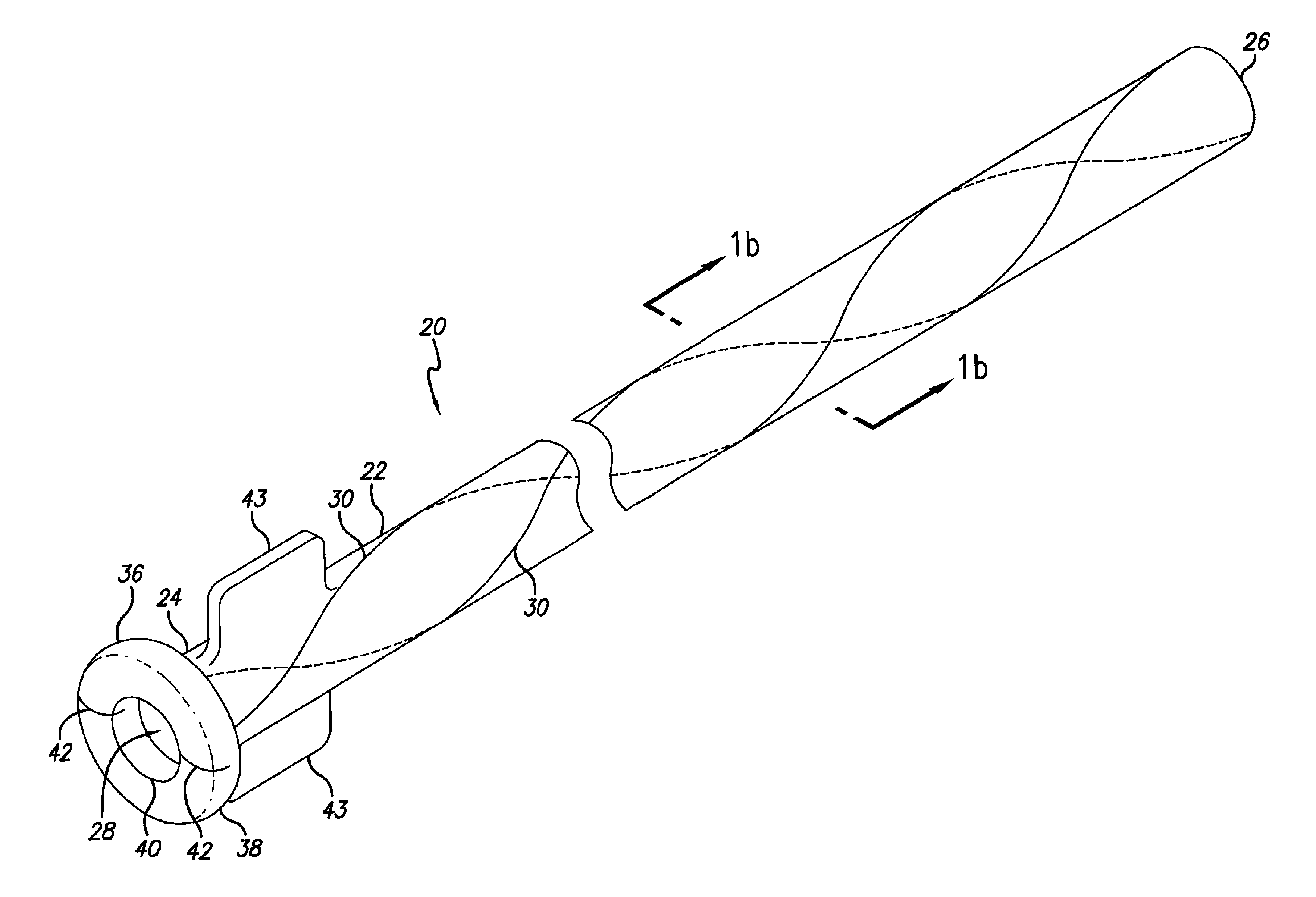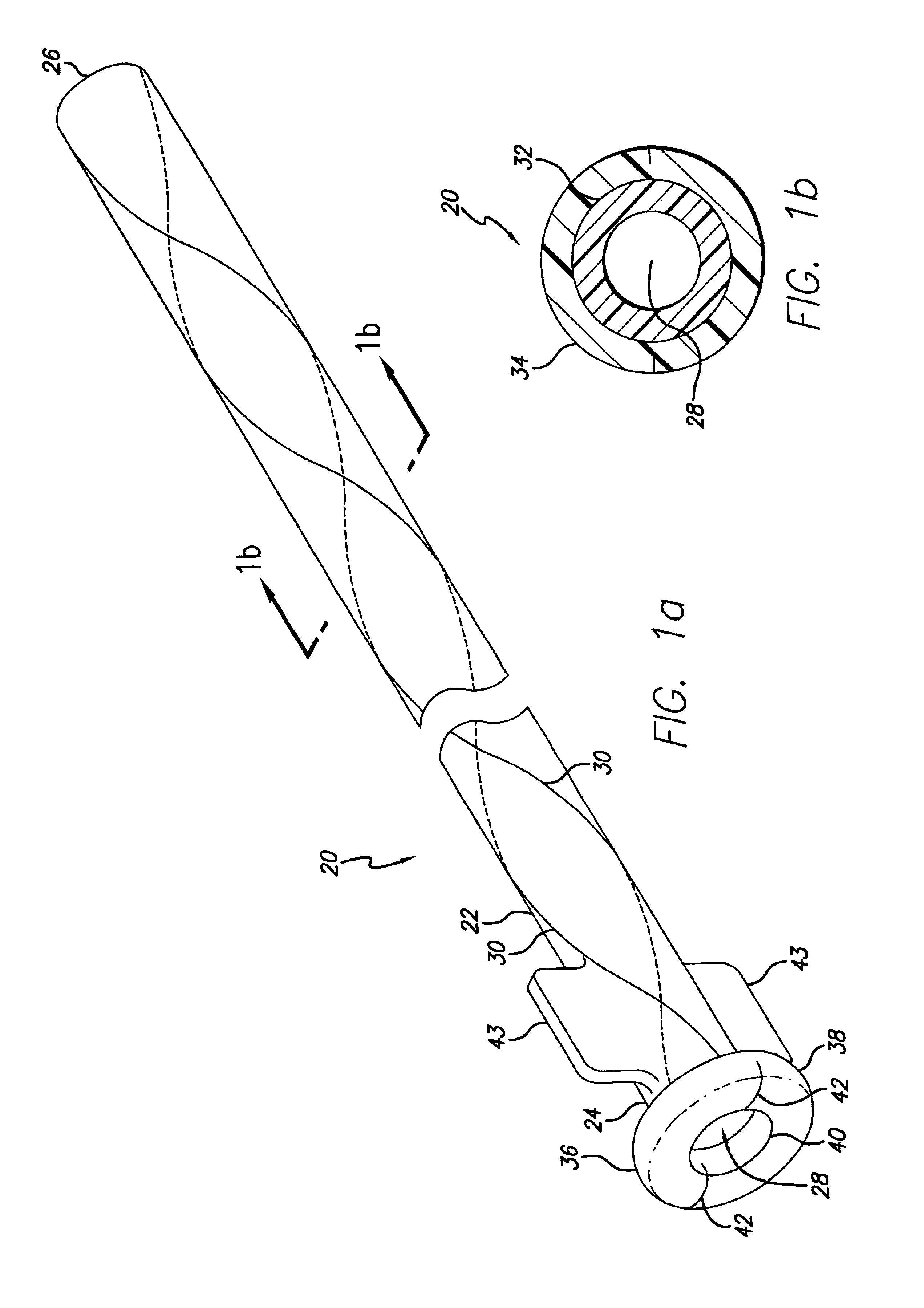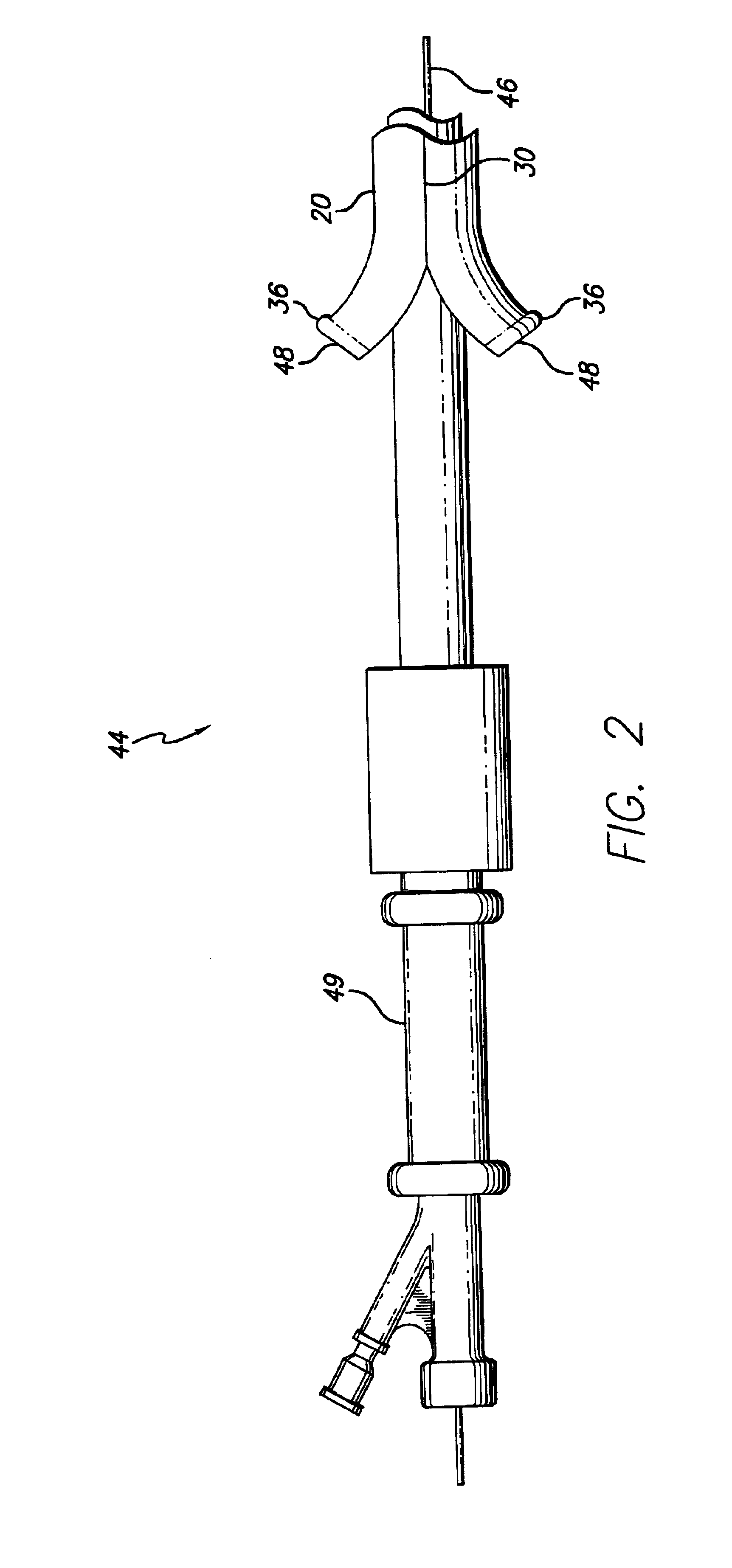Peel-away sheath
a sheath and a needle technology, applied in the direction of catheters, intravenous devices, guide needles, etc., can solve the problems of kinking of the sheath, difficulty in routing the sheath through the vasculature, and difficulty in transferring torsional loads through the sheath
- Summary
- Abstract
- Description
- Claims
- Application Information
AI Technical Summary
Benefits of technology
Problems solved by technology
Method used
Image
Examples
Embodiment Construction
[0047]Referring now to the drawings, wherein the reference numerals denote like or corresponding parts throughout the figures, and particularly to FIG. 1a, there is shown a longitudinal catheter sheath 20 including an elongate tube 22 having a proximal end 24, a distal end 26 and a lumen 28 throughout its length. The sheath 20 also includes at least one weakened area 30 which extends along the length of the sheath in a non-longitudinal pattern which facilitates peeling of the sheath. (FIG. 1a depicts two weakened areas arranged in a helical pattern.)
[0048]With reference to FIG. 1b, which is a cross-sectional view taken from FIG. 1a, the sheath 20 may include a layered composite. As depicted in this embodiment, the inner layer 32 may be a hollow tube made of a polymer possessing a high modulus of elasticity, such as polyetheretherketone (PEEK). The outer layer 34 may be made of a flexible, intermediate-durometer polymer such as polyether block amide, known commercially as Pebax™. In ...
PUM
 Login to View More
Login to View More Abstract
Description
Claims
Application Information
 Login to View More
Login to View More - R&D
- Intellectual Property
- Life Sciences
- Materials
- Tech Scout
- Unparalleled Data Quality
- Higher Quality Content
- 60% Fewer Hallucinations
Browse by: Latest US Patents, China's latest patents, Technical Efficacy Thesaurus, Application Domain, Technology Topic, Popular Technical Reports.
© 2025 PatSnap. All rights reserved.Legal|Privacy policy|Modern Slavery Act Transparency Statement|Sitemap|About US| Contact US: help@patsnap.com



